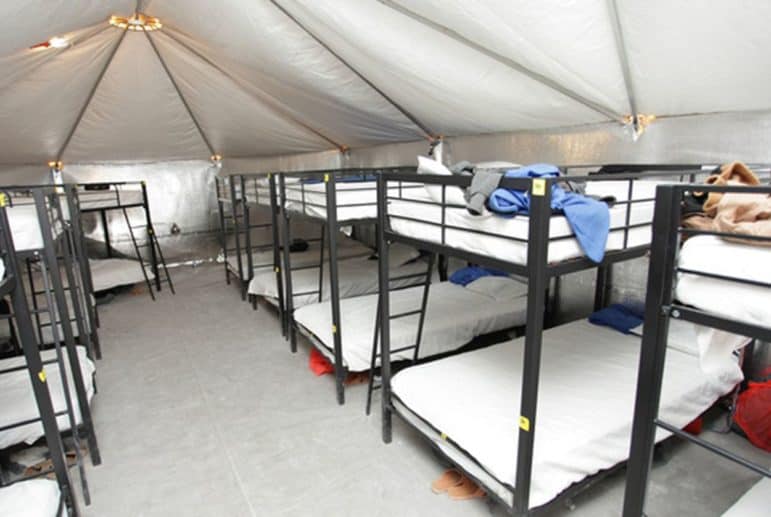
U.S. Department of Health and Human Services
Bunk beds are lined up inside an air-conditioned tent at the Tornillo facility for immigrant children.
EL PASO, Texas — The immigration detention center at Tornillo used to hold undocumented immigrant children will remain open for at least 30 more days, a government spokesperson confirmed Monday.
The facility opened at the U.S. Customs port of entry last month. It houses undocumented minors who came to the United States alone or were separated from family members or guardians by U.S. immigration officials under the Trump administration’s “zero tolerance” policy.
During a media tour of the facility two weeks ago, the incident commander for BCFS Health and Human Services, which operates the facility, said he didn’t see a need to keep the shelter open longer than the July 13 end date for the current contract.
But a Health and Human Services spokesman said on Monday that the facility will remain active at least through Aug. 13.
“HHS is legally required to provide care and shelter for all unaccompanied alien children referred by DHS, and works in close coordination with DHS on the security and safety of the children and community,” spokesman Kenneth J. Wolfe wrote in an email.
The facility at Tornillo opened after regular shelters reached capacity during the Trump administration’s separation policy. Evy Ramos, a spokeswoman for BCFS, said that as the government continues to reunite separated children with their families, space will free up in shelters for the minors staying at Tornillo.
“Until then, we will not abandon those at Tornillo and will continue to provide services on a week-by-week basis,” she said.
The facility has attracted worldwide attention since it opened, with immigration rights supporters and politicians holding several protests and marches outside the facility and calling for separated families to be reunited.
The government initially said the facility only housed immigrants who came to the country by themselves. But during the media tour two weeks ago, officials confirmed the population had expanded to include a small number of minors who were separated from their families. The facility held 326 minors at that time, the majority of them from Central America.
